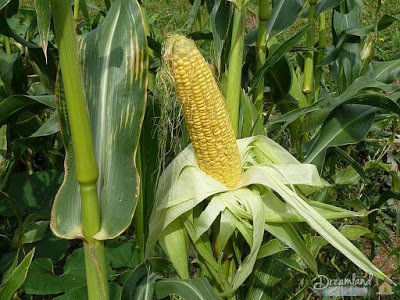Table of Contents Show
How to Plant Sweet Corn — The American Indians famously introduced the foodstuff of corn to the European colonists, who had never seen the like before. Corn stalks can be broken down to make a literal flood of by-products – bourbon, corn whiskey, cornmeal, cornstarch, corn syrup – while the kernels can be consumed, the silks made into a medicinal tea and the stalks turned to fodder.
How to Plant Sweet Corn: Cultivation, Harvest, Diseases & Insects Control

Thanks to the work of horticulturists, growers can select two of the most popular varieties available today, the white Country Gentleman or the yellow Golden Bantam. The former is known for its smaller, sweeter kernels and the latter for its plumper kernels and flavorful bite.
Growing Sweet Corn
- Seasons of growth: Corn is a warm season annual that enjoys full sun and fertile, well-drained soils.
- Frost tolerance: Frost will damage corn at any stage of growth. Corn should not be planted until after the last frost in your area, and it’s best to hold off until both soil and air temperatures have reached at least 60°F.
- Plant Height: 4-8 feet tall
- Plant Width: 1-3 feet wide
Planting Corn
- Plant Spacing: Utilize 3-4 ounces of seed per 100-foot row of intended plants. To establish better pollination and production, plant in blocks of rows rather than in one long row. Place seeds 1-2 inches deep in the soil, 9-12 inches apart in rows 24-30 inches distant from one another. For a high-density crop, plant in a square of 15×15 inches. To ensure continuous production, plant seeds every 10-14 days until early July.
- Germination Requirements: Seeds require soil temperatures of 60-95°F, and should germinate in 4-12 days.
- Best establishment method: Corn does not transplant well, making seeding the best method of establishment.
Cultivation and Harvest
Water Requirements
Water plants regularly, soaking the soil to near field capacity. Plants especially require water during phases of tasseling, silking and ear formation. Stress caused by drought will lower yield, kernel quality and have a negative effect on flavor. Note that the number of water plants receives depends on soil type. For example, heavy clay soils will not need to be watered as often as sandy soils.
Read Also:
Fertilization Requirements and Recommendations
Before planting prepare the bed with 2-4 inches of well-drained, fertile organic compost as well as 1-2 lbs of all-purpose fertilizer (16-16-8) for every 100 square feet. Both should be worked into the top six inches of the planting area.
Corn will need additional fertilization when plants have acquired 8-10 leaves and again when the first silks appear. For the first application, apply ½ lb of 21-0-0 for every 100 square feet, and then ¼ lb when silks emerge. Fertilizer should be placed 6 inches to the side of the plant and irrigated into the soil.
Days to Harvest: Depending on the variety, corn generally takes about 60-90 days to mature.
Troubleshooting
Diseases and Control
When cultivating corn, be aware that plants may suffer from root rots or damp off, smut and wilt diseases. Use seed treated for root rots and allow soils to dry slightly before re-watering to avoid this problem, which may cause seedlings to wilt and die. Smut can be identified by the white fungal galls that form on the tassel, stem or ear.
Galls must be removed and any plants that are severely infected destroyed. Select and plant resistant varieties. To avoid wilt disease, maintain clean garden practices. Remove infected plants, which may have wilting leaves, dry or rotting stalks, and streaking.
Insects and Control
Corn may attract the attention of aphids, cutworms or armyworms and corn earworms. Aphids can be controlled with the insecticidal soap and dislodged with a strong stream of water. Corn earworms, which feed on ears, can be controlled with BT or a similar natural insecticide.
Apply regularly to ensure the plants remain protected. Mineral oil applied to the silks is also used to treat this problem. Cutworms or armyworms work at night, feeding on lower parts of the plant. These can be kept away with barriers or collars around the plants.











1 comment
Here in Nigeria,It’s corn time.I think what Ann-Britt Carlsson said is correct..Ive seen changes.We eat it in two popular ways. Boiled corn with coconut or pear and roasted corn..You cld make a corn meal with beans too☺☺